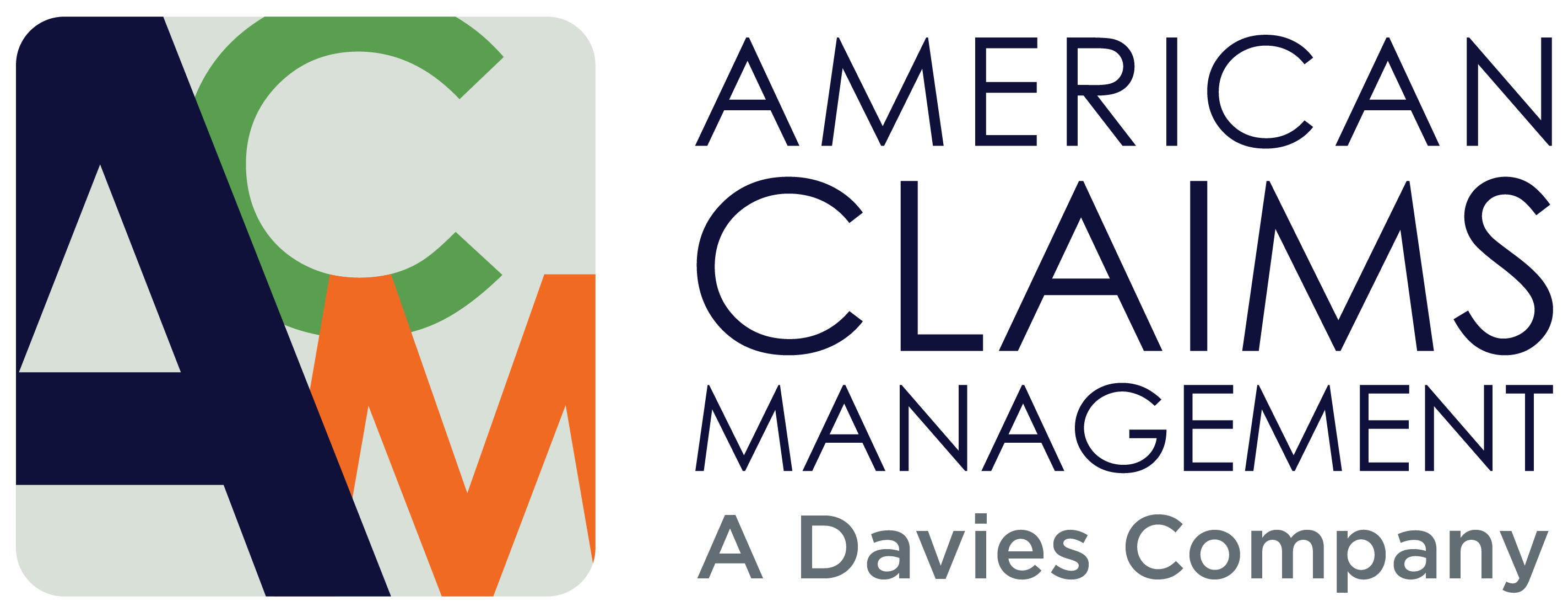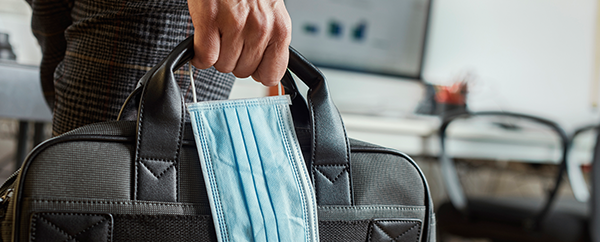Calling employees back to work? Consider these steps
As a broker or insurance company, no doubt you have clients whose employees are finally returning to the workplace. If you’re a self-insured business, you’ve probably weighed the pros and cons, and may be calling employees back to the worksite on a limited basis. With this in mind, we’re offering you safety steps for returning to work after COVID-19, ensuring your workplace is safe for your employees, your customers and vendors. These steps are applicable both to you as an insurance agency and to your commercial clients, so be sure to pass them along to your business owners.
Updated recommendations released in early June by the CDC for reopening offices include wearing cloth masks throughout the workday; repositioning workstations six feet apart or installing plastic partitions; maintaining six-foot social distances, including in elevators; and removing communal water coolers and coffeepots. View their updated employer guide here.
More than half of all employers surveyed say they’ll screen employees returning to work after COVID-19, according to a survey by employment law firm Littler Mendelson P.C. Some 58 percent are planning to conduct employee temperature or health screenings as part of reopening business plans, according their survey of 1,010 executives.
Preparing your employees for returning to work after COVID-19
CDC has provided a workplace decision tool to help employers decide if opening now is appropriate. It’s a quick read and provides an easy-to-follow decision tree. The National Safety Council has developed a series of “playbooks” and other resources under its Safe Actions for Employee Returns (SAFER) initiative to help business owners understand how to prioritize safety as they prepare to return employees to work.
Brown & Brown suggests following these steps to prepare employees for returning to work after COVID-19:
- Communicate proactively when creating plans about returning to work or re-opening facilities, including expected timelines for recalling/rehiring employees.
- Provide returning employees with recall or offer letters.
- Train and educate the workforce on new safe-at-work requirements and guidelines. Create a Return-to-Work Kit with any new policies, procedures, forms, how to prepare for arrival and processes each employee must follow:
- If employees are returning equipment such as laptops and chairs, instruct how they should be sanitized before or upon arrival.
- Explain any new entrance protocols for employees and visitors. Discourage handshaking.
- Train employees on frequent hand washing, properly covering coughs and sneezes and refraining from face-touching.
- Explain company policies and procedures related to illness, cleaning and disinfecting and work meetings and travel.
- Train employees on the hazards of the cleaning chemicals used in the workplace in accordance with OSHA’s Hazard Communication standard. Updated Safety Data Sheets (SDSs) for most chemicals are readily available on the manufacturer’s or supplier’s website. Employers should rigorously require that employees carefully review the SDS for any cleaning and disinfecting chemical that they use or encounter.
- Inform staff who to contact with COVID-19 questions.
- Communicate any new requirements to wear PPE, and if homemade masks or PPE are required or allowed to be worn in the workplace.
- If applicable, post the Families First Coronavirus Response Act (FFCRA) poster in a visible place, email it to remote workers and post on intranet or employee websites.
- Understand anxiety and fear in returning; communicate frequently about cleaning and safety measures that will help protect employees.
- Train managers on how to deal with employees managing increased personal challenges around childcare and other dependent care, finances, bereavement, loss.
- Establish routine cross-training for any essential duties.
- Create a master schedule for all employees to be used for contact tracing in the event of a confirmed or suspected COVID-19 exposure.
- Create a response plan for employees who report or demonstrate symptoms at work, or have recently been at work and tested positive.
WORK COMP CLAIMS PREVENTION FOR EMPLOYEES RETURNING TO WORK AFTER COVID-19
More than one-third of 504 workers surveyed said they would sue their employer if they believed they contracted coronavirus from a co-worker, according to a Business Insurance article.
Since several states have tied a COVID-19 presumption for workers who weren’t supplied with appropriate protective measures, employers need to know additional details on face masks and other safeguards, says WorkComCentral.com. Showing that they followed federal guidelines for protecting workers can help them rebut the presumption, should they be sued.
Particularly if your client is in the healthcare field, they need to be on the lookout for counterfeit respirator-grade masks. Quick ways to spot a counterfeit:
- Misspellings on the labels
- No approval numbers
- Shape or design is different from what the U.S. manufacturer shows in photos
- Additional CDC guidelines here
Paying attention to your employees’ mental health is also crucial as they’re returning to work after COVID-19. EAP benefits and telehealth are key benefits that you should consider providing to employees without cost to them. Your HR team is also a key player at this point, providing mental health resources. They may be called upon to reinvent certain job roles to fit the “new normal.”
Preparing your physical workplace
HOW TO REORGANIZE OFFICE SPACE FOR SAFETY
If your client’s workspace is in a shared building such as a high rise, the property manager may enact a security check-in that includes a temperature check and limit the number of people who board an elevator. Cushman & Wakefield has created a model office plan with suggested office rules that are worth a look, to provide ideas as to how to modify your office layout. You may also want to consider daily temperature checks at the reception area as employees arrive every day and require masks to be worn in most situations.
In workspaces such as restaurants, service and retail stores, it’s wise to provide face masks and gloves, add sneeze guards and provide additional safety training for workers, such as washing their masks and clothing before wearing them again.
From placing tape marks in six-foot increments and adding extra precautions for receptionists or greeters, here are tasks to consider before reopening and returning to work after COVID-19:
SANITIZING YOUR WORKPLACE
- Ensure your workplace cleaning company is using current safety methods to remove COVID-19 hazards. Expand your budget as available for continual deep clean efforts.
- Clean and sanitize surfaces frequently with EPA-registered products. The U.S. Environmental Protection Agency (EPA) has developed a list of EPA-registered products that have qualified for use against SARS-CoV-2, the novel coronavirus that causes COVID-19. EPA List N contains 287 products listed by EPA registration number and common brand name with demonstrated effectiveness against hard to-kill viruses and other human coronaviruses. Disinfectant products without an EPA registration number have not been evaluated or approved as effective in killing viruses and bacteria.
- If appropriate for your workplace, provide PPE and training on how to properly use and dispose of PPE for those cleaning or re-opening the building.
- Determine heavily used areas that need thorough cleaning, such as event centers, gyms/locker rooms, restrooms and conference rooms.
- Provide touch free solutions in such places as opening doors and in restrooms, soap and paper towel dispensers.
CHANGING YOUR WORKPLACE LAYOUT
- Social distancing in the workplace
- Change seating layouts so there’s at least 6 feet between coworkers.
- Create staggered work hours, if possible, to allow for fewer people in the building at once.
- Remove additional chairs from breakrooms to allow for appropriate distancing.
- Provide visual markers on floors for six-foot distancing, per CDC guidance.
- Create office traffic patterns so individuals refrain from cutting through cubicles, common spaces or are passing each other in the halls.
- Meetings
- Consider conducting phone/email/virtual meetings instead of in-person meetings, even when at the office.
- Limit meetings to no more than 10 individuals, provided appropriate spacing if possible, or
- Hold meetings in large space where people can spread out at six-foot intervals.
- Encourage the use of mobile phones and laptops over conference room equipment.
- Remove unnecessary chairs, especially fabric chairs.
- Add signs
- At receptionist or greeter’s stand, explaining policies.
- Reminding everyone to wash hands frequently, maintain social distances, etc.
- Reminding employees to clean their work areas frequently.
- Protect reception areas:
- Add six-foot markers to designate waiting space.
- Remove seating.
- Change sign-in process so visitors are not in close contact with the receptionist.
- Add hand sanitizer.
- Consider making these changes:
- Improve ventilation by increasing the percentage of outdoor air as high as possible in your HVAC.
- Add signs by light switches to keep them ‘on’ all day or switch to motion activated lights.
- Provide no-touch, wall-mounted hand sanitizer dispenser.
- Remove or keep open non-essential doors.
- Secure supplies and designate a specific person to manage stock and distribute items.
Resources
CDC Releases COVID-19 Recommendations for Office Buildings
COVID-19 Employer Information for Office Buildings
Workplace Decision Tool
National Safety Council Urges Caution in Reopening Business
SAFER Guides Employers as U.S. Ponders Reopening
DOL releases guidance on distancing
Return to the Workplace Guide & Checklists
Note: This article originally appeared on Arrowhead’s blog. It has been modified to better fit the needs of ACM’s brokers, insurance companies, their clients and our self-insured clients.

